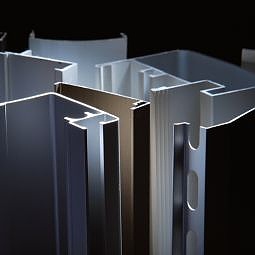
Builders can choose from many materials like metals for structures and frames. However, not all metals are the same. Some are strong yet stiff, while others are pliable but not strong enough to handle the situation. Ductile metal is necessary for many jobs, and the result is a strong and flexible structure or frame. Follow along as we discuss ductility and its importance for aluminum.
When a metal is ductile, it’s flexible and can change physical form without breaking. Imagine a bent metal frame, but the bend doesn’t cause it to break. That metal has ductility and easily stretches and bends.
Many metals are ductile at different levels. Here’s a list of metals that are considered highly ductile:
Some metals come in both ductile and non-ductile forms, such as iron. Malleable iron is flexible, while cast iron is brittle but strong.
Aluminum’s low melting point and low density make it ductile, so it can take on any shape and bend easily while remaining strong. Its formability makes it excellent for many structures and frames, especially when the structure must support some movement.
Understanding the ductility of aluminum is important, and it’s essential to note that it’s corrosion-resistant and handles thermal conductivity better than steel. Aluminum is the best choice for the following applications:
As you can see, aluminum is helpful in many situations and remains important for constructing frames of all sizes and shapes.
At A-Line Automation, we are proud to offer the highest quality aluminum structural framing and the essential aluminum pieces you need to expand or replace your current components. With aluminum extrusion fabrication, we bring your design and vision to life. Contact us today, and together, we’ll get your framing system up and running.